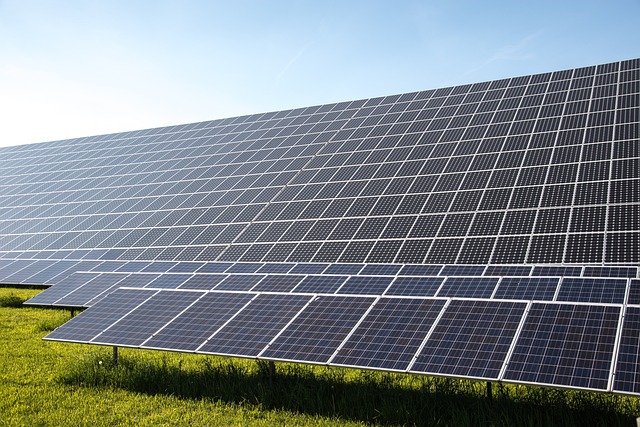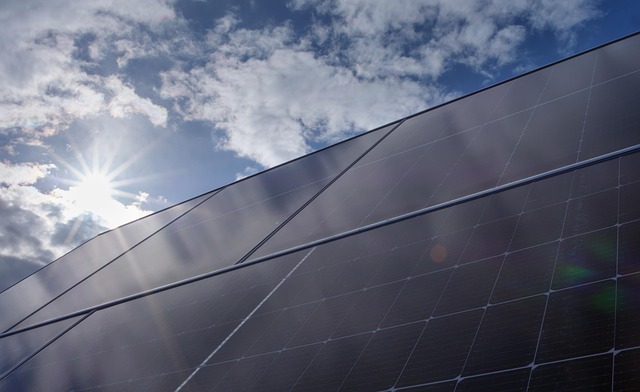
The Art of Solar Energy: How Solar Panels Transform Architecture
In the evolving landscape of architecture, one of the most significant developments is the integration of solar energy. As society becomes increasingly aware of the environmental challenges posed by traditional energy sources, architects and builders are turning to solar energy solutions to create sustainable, energy-efficient buildings. Solar panels, once seen merely as functional installations on rooftops, are now being creatively woven into the fabric of architectural design, enhancing aesthetics while providing renewable energy.
The Shift to Sustainable Architecture
Over the past few decades, the urgency surrounding climate change and environmental degradation has prompted a shift towards sustainable architecture. This trend not only seeks to minimize the ecological footprints of buildings but also strives to connect architecture with nature. Sustainable architecture is characterized by its thoughtful design, utilization of renewable energy sources, and consideration of resource efficiency. Solar panels represent one of the most accessible and effective forms of renewable energy, making them a focal point in sustainable design.
Understanding Solar Panels
Before delving into their architectural applications, it is essential to understand what solar panels are and how they work. Solar panels, or photovoltaic (PV) panels, convert sunlight into electricity using semiconductor materials. When sunlight hits these materials, electrons are knocked loose, creating an electric current. This process is both clean and renewable, providing a source of energy that reduces reliance on fossil fuels.
There are different types of solar panels available, primarily monocrystalline, polycrystalline, and thin-film panels. Each type has unique characteristics in terms of efficiency, cost, and aesthetics, allowing architects to choose the best fit for their projects. Monocrystalline panels are known for their high efficiency and sleek appearance, making them popular for contemporary designs. Polycrystalline panels are slightly less efficient but are more affordable, while thin-film panels offer flexibility and the potential for innovative applications.
Architectural Integration of Solar Panels
The integration of solar panels into architectural design is not merely about installing them on rooftops. Architects are now exploring various ways to incorporate solar technology seamlessly into buildings, creating a harmonious blend between functionality and aesthetics. This thoughtful integration can be categorized into several approaches:
Building-Integrated Photovoltaics (BIPV)
One of the most innovative approaches is through Building-Integrated Photovoltaics (BIPV). BIPV systems replace traditional building materials with solar technologies, allowing architects to create structures that are both visually appealing and energy-producing. Examples include:
– Solar Facades: These are external walls covered with solar panels that can generate renewable energy while also providing insulation and protection.
– Solar Roof Tiles: Designed to look like traditional roofing materials, solar tiles offer a discreet way to harness solar energy without compromising the building’s aesthetic appeal.
– Glass Solar Panels: Transparent or semi-transparent solar panels can be used in windows or glass walls, allowing natural light to enter while generating electricity.
Enhancing Aesthetics Through Design
Architects are not only focused on integrating solar panels for energy efficiency but also for the aesthetic enhancement of buildings. Modern architectural trends celebrate clean lines, minimalism, and a connection to nature. Solar panels can complement these styles in various ways:
– Artistic Designs: Designers are creating unique solar panel configurations that resemble art installations, making them a focal point rather than an afterthought.
– Custom Colors and Textures: Advances in technology allow for the customization of the appearance of solar panels, enabling architects to match them with specific design themes.
– Landscaping Solutions: Solar panels can be integrated into garden designs, powering lighting and other systems while aesthetically enhancing outdoor spaces.
Smart Energy Solutions in Architecture
Incorporating solar panels into architecture is also about embracing technology. The convergence of smart home technology and solar energy systems transforms buildings into intelligent environments that optimize energy use. Smart grids enable real-time monitoring and management of energy consumption, allowing homeowners and businesses to maximize their solar potential. This adaptation is increasingly reflected in architectural design, where buildings are being designed as integrated ecosystems that communicate with one another.
The Economic and Environmental Benefits
Beyond aesthetics and functionality, the integration of solar energy into architectural designs presents significant economic and environmental benefits:
– Reduced Energy Costs: Solar panels provide a way to generate free electricity after the initial investment, leading to considerable savings on energy bills over time.
– Increased Property Value: Homes and commercial buildings with solar installations often have higher market values and can attract environmentally conscious buyers.
– Energy Independence: By generating their own energy, homeowners and businesses can reduce their dependence on external energy sources, contributing to national energy security.
– Environmental Impact: Solar energy significantly reduces greenhouse gas emissions, contributing to a more sustainable future and mitigating climate change effects.
Challenges to Overcome
Despite the many benefits, there are challenges associated with the integration of solar panels into architecture:
– Initial Costs: The upfront costs for purchasing and installing solar panels can be a barrier for some, although incentives and financing options can alleviate this burden.
– Regulations and Permits: Navigating local building codes and regulations can be complex and may hinder the installation of solar technologies.
– Building Orientation and Location: The effectiveness of solar panels depends on their orientation and location, with some areas receiving more sunlight than others, which can affect energy production.
Future Trends in Solar Architecture
The future of solar energy and architecture is bright, with exciting developments on the horizon. Key trends shaping this future include:
– Advancements in Technology: Ongoing research and innovation are leading to the development of more efficient solar technologies, such as bifacial panels and solar skins that offer improved aesthetics.
– Energy Storage Solutions: As battery storage technology continues to improve, integrating solar energy with storage solutions will become more common, allowing buildings to operate independently even during periods of low sun exposure.
– Regenerative Design: Future architecture will focus on not just sustainability but regeneration, aiming to create buildings that produce more energy and resources than they consume.
Conclusion
The art of solar energy is reshaping architecture in profound ways. As architects increasingly embrace sustainable design principles, solar panels are proving to be much more than just energy-efficient installations. They are becoming integral elements of aesthetic expression, marrying utility with beauty and redefining the relationship between buildings and their environments. As the benefits of solar energy continue to unfold, it is clear that the future of architecture will be significantly influenced by this powerful renewable resource.
In a world striving for sustainability, the successful integration of solar panels into architectural design will be essential in fostering a healthier planet. By championing solar energy, architects have the opportunity to lead the way toward a greener, more sustainable future.



